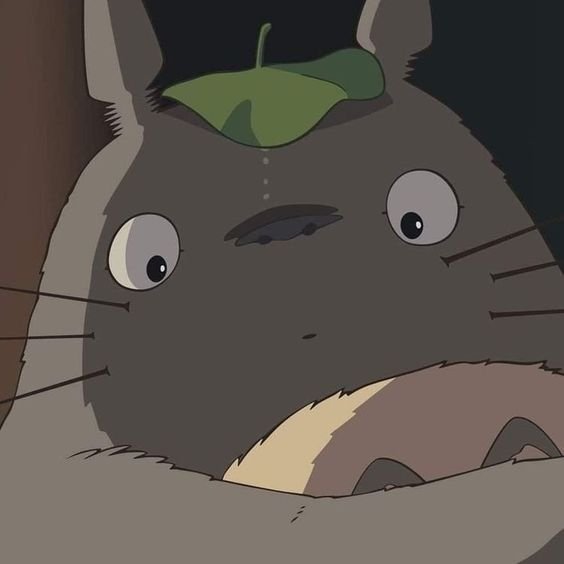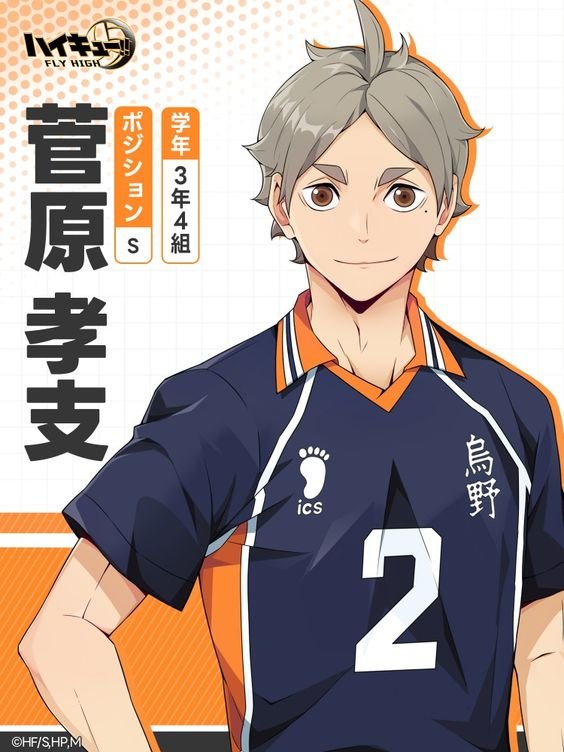
Totoro
Totoro |
|
|---|---|
 |
|
| Japanese Name: | 大トトロ (Ō Totoro) |
| Species: | Totoro Tribe or Kodama (Tree Spirit) |
| Age: | ~1,302 years or more than 3,000 years |
| Gender: | Male |
| First Appearance: | My Neighbor Totoro |
| Second Appearance | Mei and the Kittenbus |
| Voice actor (Japanese): | Hitoshi Takagi |
| Voice actor (Disney): | Frank Welker |
Appearance

Mei’s full appearance.
Totoro is a large, gentle creature covered in dense, soft grey fur with a creamy beige belly adorned with a pattern of grey arrow-like shapes. His wide-set, expressive eyes and long whiskers give him an endearing, yet slightly mysterious look, while his prominent, pointy ears and round, plump body make him instantly recognizable. Totoro has strong, large paws equipped with long claws, hinting at his role as a guardian of the forest. When he opens his mouth in a big grin—or a yawn—it expands enormously, adding to his charm and slightly surreal appearance. Totoro’s silhouette, with his rounded body and feather-like fur tufts, faintly resembles that of an owl, emphasizing his mystical, nature-bound presence.
Story
Totoro is one of the last members of the ancient Totoro Tribe, a mysterious group of forest spirits on the brink of extinction due to age-old conflicts with humanity. Over the centuries, Totoro has quietly observed human culture, learning to create Jōmon pottery during the Jōmon period and mastering the use of a spinning top in the Edo period—small but meaningful ways he connects with the world of humans.
My Neighbor Totoro
In My Neighbor Totoro, Totoro first enters Mei’s life as a surprising, magical encounter. Mei, curious and full of energy, chases small forest spirits through the yard of her new country home, following their trail of acorns deep into the forest. There, she stumbles upon the massive Totoro napping beneath the ancient camphor tree. Though startled, Totoro allows Mei to rest comfortably on his furry chest, marking the beginning of a gentle friendship between the human sisters and the forest spirits.
Later, Totoro unexpectedly appears at a rainy bus stop where Mei and Satsuki wait for their father. Totoro wears a simple leaf on his head as his only protection from the rain, prompting Satsuki to kindly offer him their father’s umbrella. Totoro, enchanted by the pitter-patter of raindrops on the umbrella, jumps on the ground to make the rain fall more playfully. When his ride, the Catbus, arrives, Totoro gifts the girls a bundle of acorns wrapped in bamboo, a gift they later plant in their yard.
In a magical moment that follows, Totoro leads the other forest spirits in a song and ritual dance, helping the girls’ acorns to sprout and grow. The night culminates with Totoro inviting Mei and Satsuki to fly on his spinning top through the treetops, where they joyfully play his acorn flute and bask in the wonder of the forest.
When Mei goes missing on her journey to the hospital to visit their mother, Satsuki, in desperation, seeks Totoro’s help. Totoro, without hesitation, calls upon the Catbus to assist in finding Mei. Thanks to Totoro, the sisters are reunited safely, cementing their friendship with the forest spirits.
In the final scenes, Totoro watches over Mei and Satsuki’s happy return home, serenely playing his flute from afar. During the end credits, he and the other Totoros are seen gathering and feasting on acorns, joyfully observing the girls’ seasonal activities, such as creating a snow-Totoro in the winter.
Mei and the Kittenbus
In the short film Mei and the Kittenbus, Mei meets Totoro once again during a grand gathering of forest spirits organized by the wise Granny Cat. Totoro, though silent as always, is visibly delighted to see Mei. Along with the other spirits, he helps her respectfully introduce herself to the Granny Cat, showing his protective affection for her. This heartfelt reunion deepens their unique bond, reminding viewers of the lasting friendship between Mei and the mystical beings of the forest.